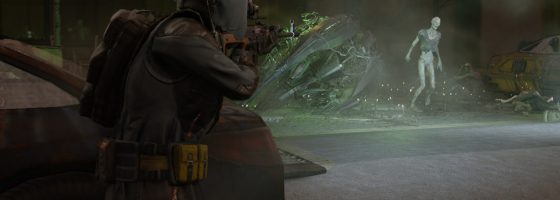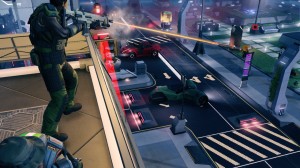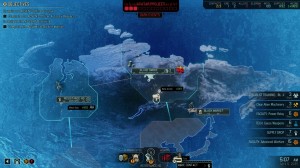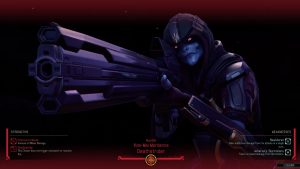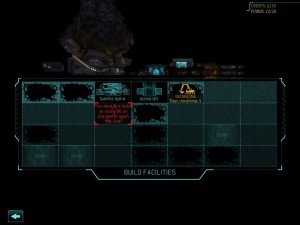On my new computer, I finally had a chance to sit down and play XCOM 2 War of the Chosen by Firaxis, without the technical issues plaguing my old PC and see the game in its full light. I’ve said many times over that Firaxis’s take on the venerable franchise comes close to being my perfect game, but the issues I have with it keep it from that lofty position.
This year, I’ve been able to play a variety of tactical strategy games, and I can finally put into words why I feel XCOM and XCOM 2 just don’t work for me from a design perspective.
Units on the Board:
To understand the difference between Firaxis’s take on XCOM and other tactical strategy games, you need to grasp one important concept. In videos and interviews, Jake Solomon (Creative Lead on XCOM) spoke about how they originally approached making XCOM. Early versions of the game mirrored the original’s focus on RPG stats and values for how troops operated.
The famous “time units” which dictated all the actions a squaddie could do in a turn were on display. Upon playtesting, Jake and the team came to the realization that the time unit system — and by extension the variety of attributes for units — was just too cumbersome to bring back as they were. To be fair, he’s not wrong; the original X-Com can become a mess of stats and units very quickly.
So it was decided to go in a different direction, and that was to embrace tabletop design as the basis for XCOM. What that meant was relying on a far more abstracted system for how units behaved, combat worked, and the introduction of “skills” characters could learn. While both enemies and allies had attributes, they were far simpler and used smaller numbers. The basic actions for a squaddie never changed, but their class would determine skills and weapons that they would be able to use if they survived. Every character had two actions per turn and attacking always ends a character’s turn.
But perhaps the greatest and most polarizing feature in Firaxis’ take was a change in defensive design. In the original game, characters had a possibility of dodging attacks, but the main way to keep them alive was to acquire higher-quality versions of armor to block damage. In Fraxis’s system, defense in the form of taking damage was replaced as avoiding it; and armor simply added more health points onto a character. This was done part in parcel with the cover mechanic.
On every map, there is partial and full cover that characters can hide behind. Partial cover reduces the chance of someone hitting that character by 25%, and full cover reduces it by 50%. Many advanced enemies get a bonus to their cover rating by the ambiguous “defense” stat.
This also had an impact on how maps were designed around partial and full cover as a way of focusing fights to those areas.
In turn, XCOM and XCOM 2 became heavily tuned tactical strategy titles with some of the best secondary systems I’ve seen from the genre. However, that highly tuned design is where my problems with the game begin.
Fighting the Game
There’s a difference in my opinion between fighting the enemies in a videogame and fighting the design of the game itself. The former is always better than the latter and lead to more interesting decisions and actions. This is very important for XCOM, as the entire game is built on asymmetrical balance and options between the aliens and the player.
With both titles no matter what I did, I always felt like the mechanics were hamstringing me from enjoying the game. From a basic standpoint, you simply don’t have a lot of options or viable tactics to play around with. If enemies are behind full cover, there is very little you can do to get them out of it.
All your true options and toys to play with are locked to the skills of the respective classes. Let’s say you want to suppress an enemy and move your units around to flank, well, you better have a grenadier with you for that. Then there are some options the enemy has that there is no viable action on your part to avoid.
I’ve had cases that with all my troops behind full cover, a sectoid could mind control them from across the screen while in full cover itself, and there was no way I could attack him safely to free the unit.
The game’s action system is also limiting and equally punishing given the cover system. Because attacking always ends your turn, you can’t fire and then retreat; with exception to the skirmisher class. This decision greatly limits what you’re able to do on any given turn.
The only special option that is universal is the ability to “hunker down” — lowering the chance of an enemy hitting them by 50%. That’s all well and good, but it clashes with the design of XCOM 2 and the focus on being aggressive.
With many missions having objective timers (another controversial point), actions that aren’t moving the battle forward aren’t good. A long time ago, I wrote a similar piece about the first XCOM, and one of the things I said was that I wanted Firaxis to give the player more generalized abilities to make the combat more interesting.
Ultimately, I always feel like I’m fighting the game systems of XCOM 2, and by extension, being punished for making the right moves. A major point about the tactical layer is getting setup for flanking shots. Given the game’s cover system, this is harder than it sounds on most maps. There are cases where I can set up a brilliant plan, get a character into the perfect position, do everything right, and still lose.
And that takes me to the point that I don’t think I’ve heard anyone say they like about XCOM and XCOM 2 — the pods. In the original X-COM, each enemy had line of sight and hearing ranges to determine whether or not they would detect the player. This meant there was a realistic aspect to how enemies would respond and come after the player.
Firaxis’ take went for a far more simpler design. Enemies would spawn in groups or “pods” that would be at set points on the map. The second a character reveals a pod, that pod would immediately activate and move into cover. With the game’s cover system, this gives them a massive advantage. What’s worse is that due to how things are set up, it’s also possible to trigger multiple pods and easily be outnumbered two or three to one.
That also had the passive impact of greatly limiting your range of motion on the map. Because of the fact that you don’t know what’s around, you can’t easily move around to flank a pod lest you risk triggering more.
In XCOM 2, the developers added in the ability to start most maps hidden to allow players to move around and set up. However, the tabletop design prevents characters (with two class exceptions) from reentering stealth, even if they wipe out the pod.
Again, the player is limited by the design of the game which in turn drastically reduces the number of options that you can play with. And that goes double for when the chosen are introduced.
With the arrival of the Chosen: elite units who procedurally grow over the campaign, this can also screw with the player. Case in point, doing the mission where they are introduced, the last two times the Chosen got the ability to be immune to overwatch — the only way to lock down enemies and get a shot in when they move. When that happens early on, I lose one of my main options and have nothing to replace it with.
There’s no room for trying something new or being daring in XCOM 2 — unless the game in a manner of speaking “allows it”, you must play the game a specific way or lose every time.
And losing in Firaxis’s take is even more punishing than the original, and it shouldn’t be the case.
The Persistence of Losing
A major part about X-Com’s design and what has preserved its legacy was the gameplay loop around failure. When you first start playing the game, you are guaranteed to lose characters and be behind the eightball. Losing always hurt you in the short run, but the MO of the game was all about winning the war, regardless of the battles.
Every battle would earn you resources that you could use back in your base, and the squaddies that did survive would slowly become more badass over the course of a play. So much of the progression of the game was on the gear and research system. While higher-ranked squaddies were valuable, the early game was all about closing the arms race between you and the aliens.
This sense of designing around losing could also be seen in the Long War mod (both in XCOM and XCOM 2), and how it was designed to make the campaign more involved. The mod straight up tells you that it can design missions that you are not supposed to win, and that it’s better to retreat than try to fight it.
Both XCOM and XCOM 2 may offer some wiggle room in terms of losing missions, but this goes away when you try to play the games on the harder difficulties. Keeping with the tabletop design, the campaign structure is heavily fixed.
Every month without fail will give you a terror mission, and instead of normal missions occurring organically, they appear at set intervals each month. The player is not given time to win and lose, and the game’s progression can easily lead the player into a negative feedback loop.
It’s been accepted by expert players of the game that if you lose any squaddies on the opening mission, or outright lose your first real mission, it’s better to restart the game than keep playing due to falling behind.
The base building is one of the worse offenders in this regard. You need engineers and time to mine out parts of the ship, and then supplies, power, and more time to build the room you want. Once again, there is the best build order for starting out that you need to get if you want to have a chance. This is further exemplified by the fact that you need to unlock the ability to have more squaddies in your group, and you need to get that upgraded ASAP.
In one play, the very first mission in the game had my team of four up against 10 enemies who all had the possibility of one-shotting any of them.
A big part of XCOM 2’s structure is that you are battling the Advent who have their own plans. This comes into play with the beginning of goal of attacking “blacksites” to delay their win condition: “The avatar project.” Again, due to the fixed nature of the campaign structure, if you’re not making progress then you are falling behind.
In the previous section, I discussed how skills were introduced via classes. Due to the fixed nature of weapons and abilities, losing high ranked characters on a mission is far more punishing than it was in the original. If you lose your best gunslinger or ranger, you also lose all the tactics they brought to help even the odds.
As with the original game’s structure, each month of in-game time will slowly introduce harder enemies to challenge the player, and again, you can fall behind very easily.
Firaxis did attempt to correct this issue with War of the Chosen. A new room you could build in the avenger allowed you to send squaddies on missions behind the scenes that could give them free experience and level them up without needing to expose them to combat.
Now with all that said, I know someone is ready to leave a comment to the likes of “Once you get high-ranked units the game becomes a cakewalk,” and that is very true, and also a big issue with the design of XCOM.
An Inverse Arms Race
XCOM 1 and 2 are games that start out hard until they’re not. What that means is that due to the fixed nature of the design, there will either come a point where the player cannot keep up with the AI and lose, or they will pass them and the difficulty goes away.
A full squad of upgraded characters, with all their abilities at play, is like playing a different game than it was at the beginning. XCOM 2 also introduced more ways of powering up characters with weapon customization and special items that can raise squaddie stats.
You can see this happen in the legacy mode at a faster rate that was added in the last patch. Going from having nothing to a sniper who can hit from any visible point on the map, psionic attacks that can mind control enemies, and moves that allow for multiple attacks, the game becomes easier for some strange reason.
This has always been the allure of the X-Com progression model — reaching the point where you can fight the aliens on their own terms and beyond. However, you still run into the case of either the game is too easy, or one bad turn could spell disaster for your squad. Completely lose your highest squad on a mission and you might as well reload or restart.
Each enemy type itself is hard-coded in what it can do, and there are no variations at the individual level. This was also a problem that the original X-Com ran into, and how many missions just became grinds of fully upgraded characters clearing out the weaker enemies. This was part of the reason for having the chosen and “boss” enemies introduced to mix things up.
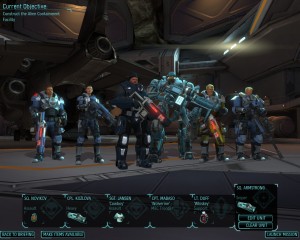
once the player takes the lead in terms of skill and tech, the game becomes one-sided in the opposite direction
What ends up happening in these games is that no matter what the map generation is or the enemies you fight, all your tactics are locked to the units and begins to make things repetitive.
One of the best additions with War of the Chosen was the idea of the nemesis system from Shadow of War and keeping the chosen changing. I would have liked to have seen something similar happen to the normal units over the course of the campaign.
I do know of some mods that were created to add in more enemy variants of the lower enemy classes to spice things up.
Now it’s time for something a little different, and how one of my favorite tactical systems came from an unexpected source and where XCOM could have taken some notes from.
Rabbid Punching
One of my favorite tactical systems as of late came from Mario + Rabbids Kingdom Battle. Let’s get one thing straight: XCOM 2 from a system’s standpoint is the deeper game, hands down. However, it’s how Ubisoft designed the tactical layer of Mario + Rabbids around generalized and specialized move-sets that’s important to examine.
Similar to XCOM, the game has partial and full cover that either gives you a 50% chance to hit or 0% chance respectively. Unlike XCOM, Mario + Rabbids will always let characters hit cover if they miss; giving them a chance to weaken or destroy it.
Every playable character in the game has three actions per turn separated into three groups:
- Moving around the map and sliding into enemies to hurt them, or using friendly characters to jump around and get into a better position
- Use either their main or secondary weapon
- Use one of their two special abilities
Here’s the important point about these actions — the player and the enemies can do them in any order. If I want to attack, run away, and then use my special to heal, I could do that; just as I could heal, slide into an enemy, and then attack them from behind cover.
To be fair to XCOM, Mario + Rabbids does not have anywhere near the same depth of options or situations. However, the reason why I liked the system wasn’t about the complexity, but about the choices I had at any given time.
As we’ve talked about, XCOM’s design greatly limits the tactical options you have in any given turn due to the rules at play. What I enjoyed out of Rabbids was the fact that I could come up with a variety of solutions to my problems based on the tactics at hand and which characters I was using.
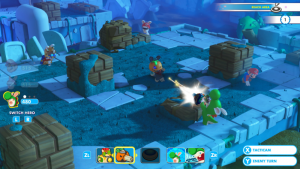
The standard options in Mario + Rabbids afforded more depth at the start, while XCOM backloads it with skills
In my first run of the game, I used Rabbid Mario and Rabbid Luigi as close range status-effecting brawlers. On my second run, I used regular Mario and Luigi as overwatch sniping wonders. If something went wrong, it wasn’t immediately a game over; I could pivot.
What’s interesting about comparing the two games is that Rabbids went for having the generalized moves have more utility compared to the character-specific or specialized options. While XCOM keeps the generalized moves very basic and backloads the utility into the specialized options.
There is more that I liked about Mario+ Rabbids, but that would be getting away from our discussion on XCOM and XCOM 2.
A 95% Success Rate
Ever so often people will remark about that one game they would like to be stuck on a deserted island with, and for me, XCOM 2 comes the closest being that game. From a systems standpoint, the game is one of my favorites and a game well worth studying.
However, no matter how close it comes to perfection, I just can’t fall in love with the game like others have. If/when we get a XCOM 3 from Firaxis, I’ll be there day one for sure to see if my luck improves or I miss three times in a row.
If you enjoy Game-Wisdom and want to talk design with me, be sure to check out our discord channel

